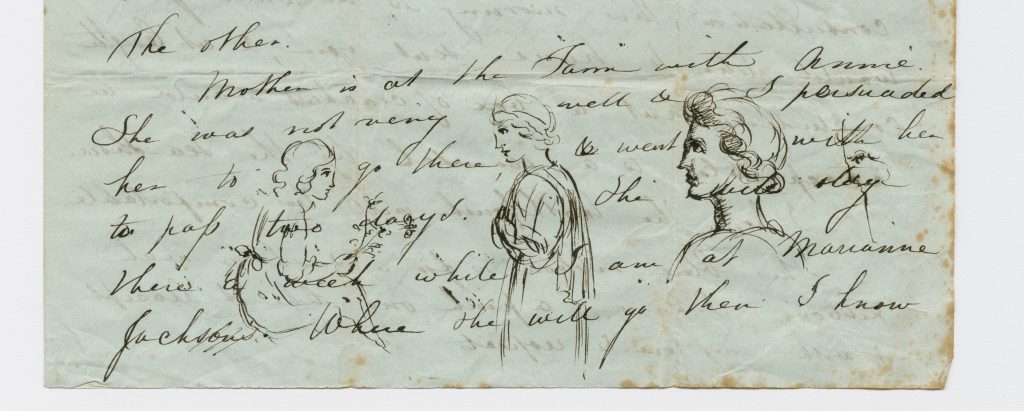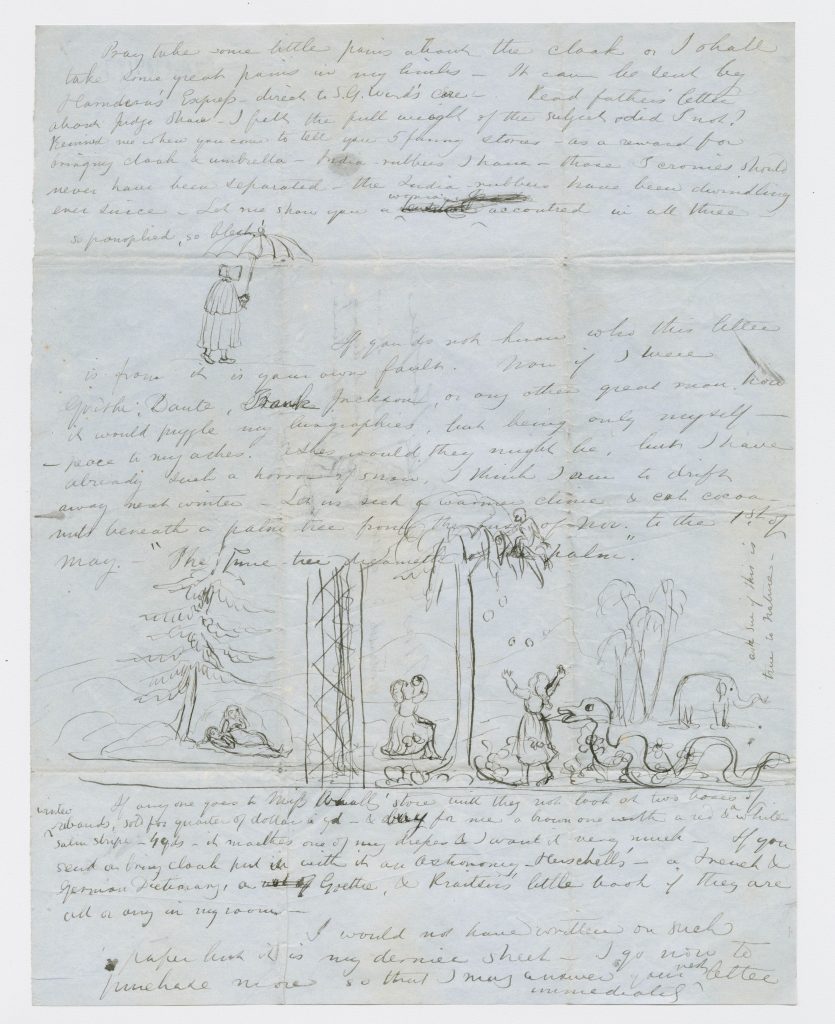By Susan Martin, Senior Processing Archivist
Yesterday (30 August) was the 203rd anniversary of the birth of Transcendentalist Caroline Sturgis Tappan. When I searched old posts at the Beehive and discovered I’d never written about this interesting and talented woman, I decided I should correct that oversight.
Caroline Sturgis was born on 30 August 1819, the daughter of Elizabeth and William Sturgis of Boston. She had four sisters and one brother. As the daughter of a wealthy merchant, Caroline had quite the privileged upbringing and was educated by some of the most eminent 19th-century thinkers and teachers, including Amos Bronson Alcott, Dorothea Dix, and Margaret Fuller.
Today, Caroline is known primarily as a Transcendentalist poet and children’s author. Her poems appeared in The Dial with the byline “Z,” and her children’s stories were published (anonymously) as Rainbows for Children and The Magician’s Show Box. She was also an intimate friend and confidante of both Ralph Waldo Emerson and Margaret Fuller, as described by Francis B. Dedmond in 1988, Kathleen Lawrence in 2005, and Megan Marshall in 2013.
Given her accomplishments and important literary connections, I think Caroline gets short shrift in histories of the Transcendentalist movement. I found no record of a full-length biography, though she’s mentioned in passing in biographies of Emerson, Fuller, Henry James, Nathaniel Hawthorne, and Sophia Peabody Hawthorne.
Caroline may have been overshadowed by her older sister, Ellen Sturgis Hooper, who was also a poet. Even the notice that appeared in the pages of Literature magazine (page 178-82) after Caroline’s death, which characterized her work as “daring” and brilliant,” spent more time praising her sister’s “finer [poetic] touch” and citing Ellen’s poetry. You can see a similar dynamic in an 1885 article in The Journal of Speculative Philosophy (pp. 249-50).
Meanwhile, a joint biographical sketch of the sisters in Notable American Women (vol. 2, pp. 214-5) describes Caroline as “the more outgoing and unconventional of the two.” One of her poems, published in The Dial in October 1840, begins with these lines:
Greatly to Be
Is enough for me,
Is enough for thee.
As an archivist, I’m most familiar with Caroline through her manuscript correspondence, which appears in a few different collections at the MHS, including the Davis-Sturgis-Tappan family papers and the Sturgis-Hooper family papers. Author Megan Marshall calls Caroline “high-spirited” (p. 100), and after reading through some of her letters, I have to agree. You can almost picture her grinning to herself as she writes. Here’s a sampling:
To her sister Ellen, 18 Sep. 1838: “Your tortoise of a letter has at length been welcomed at Naushon, & I thought at first it was from father, until I perceived it had no date & then I knew that it must of course be from you. I suppose you think time is nothing & it is not worth while to note down the day when you write.”
To Lidian Jackson Emerson, 4 June 1839: “I am sure it is very kind for you & Mr Emerson to invite me to stay with you, for I am as uninteresting as possible, & have nothing to say. […] I shall not send my love to the baby for I never like anything that can only express itself by doleful cries. I only love it when it arrives at smiles.”
To Ellen, about a mouse, 29 Sep. 1839: “I called him Romeo, because he roamed about & squealed O! all the time.”
To her husband William A. Tappan, 17 Jan. 1849: “It seems to be a great trouble to build a house & after it is done we shall feel as if we must like it whether we do or not.”
To her father William Sturgis, 9 Mar. 1854: “You know children will be children & mine do not make any pretensions to be angels, except that the other day Ellen refused a tart which was offered her, saying her mother did not let her eat tarts, which I consider slightly angelic.”
As an added treat, Caroline frequently illustrated her letters.


Caroline Sturgis married William Aspinwall Tappan, son of abolitionist Lewis Tappan, in 1847. The couple had two daughters, Ellen and Mary. Caroline survived all her siblings, dying on 20 October 1888, and is buried at Mount Auburn Cemetery in Cambridge, Mass. In the 1930s, the Tappans’ home, Tanglewood, was donated to the Boston Symphony Orchestra by their daughter and granddaughter.
I hope you’ve enjoyed learning about Caroline Sturgis Tappan as much as I have!


Thank you for this illuminating portrait of Caroline Sturgis.